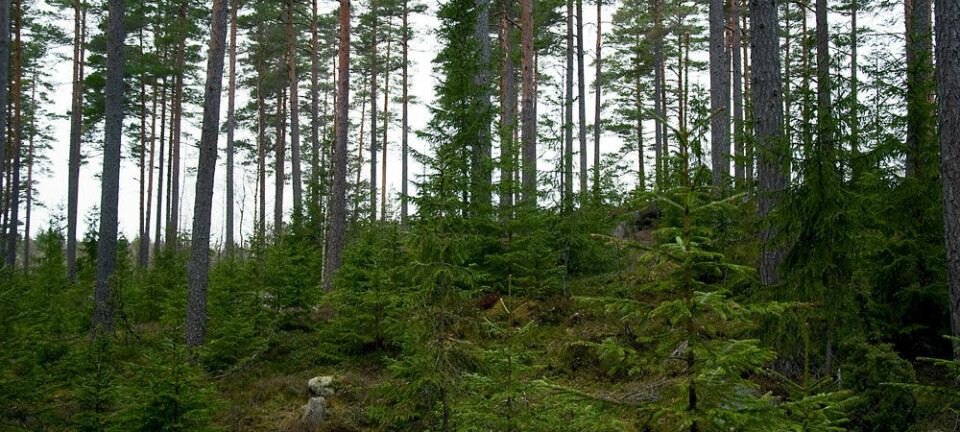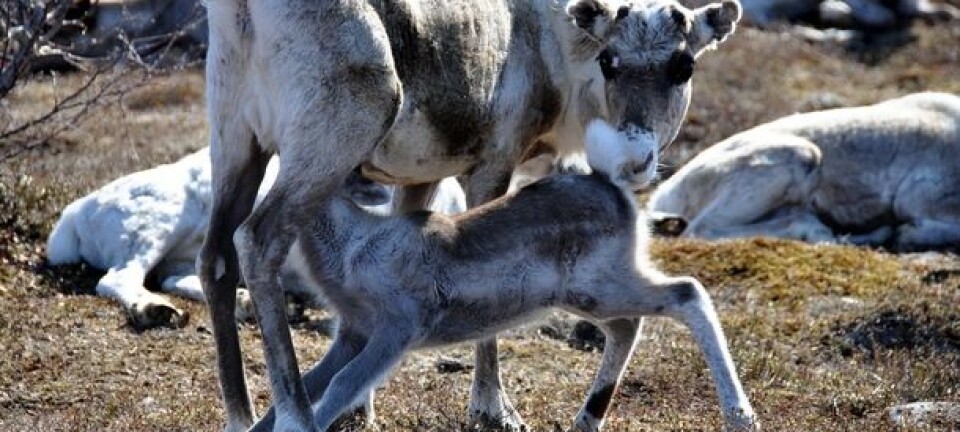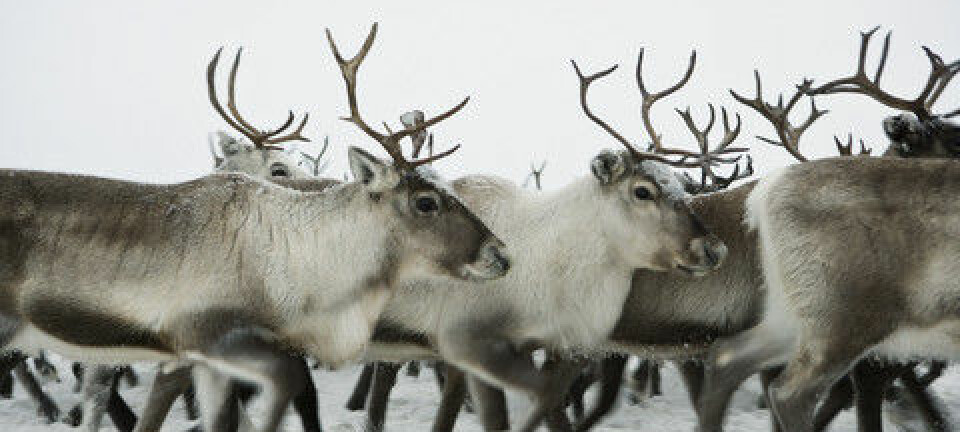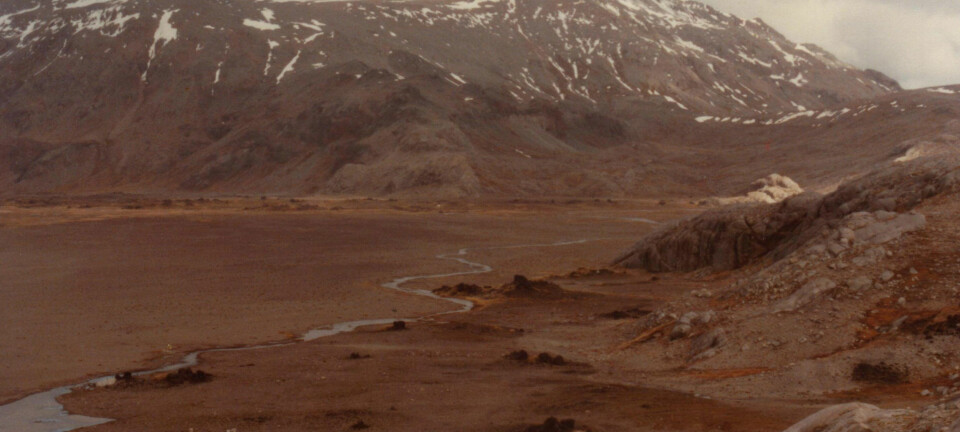This article was produced and financed by NINA - Norwegian Institute for Nature Research
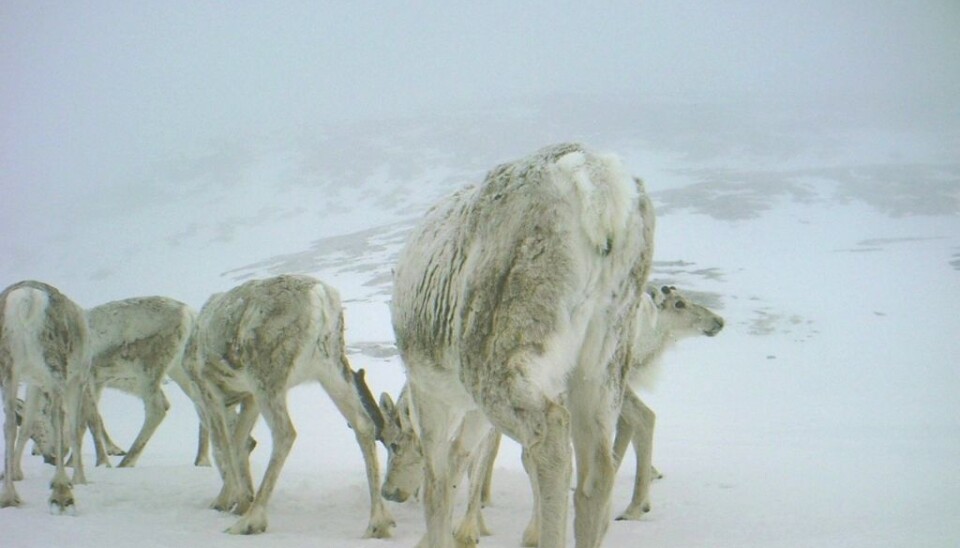
Reindeer mating – when it's good to be fat
Summer time is fattening time for reindeer bucks. If they fail to gain enough weight during these months, they can forget about mating in the autumn.
Denne artikkelen er over ti år gammel og kan inneholde utdatert informasjon.
Norway has the last remaining wild tundra reindeer in Europe – about 35,000 distributed in 23 different mountain areas.
Some of these animals are original wild reindeers, but others have their origin in domesticated animals that were reintroduced to the wild in experiments in the 1960s.
When the calving season approaches in the middle of May, the female reindeer migrates to higher altitudes.
"Some goes as high as 1,600 meters above sea level to give birth to their calves away from predators," says Per Jordhøy at The Norwegian Institute for Nature Research (NINA). He has written several books about wild reindeer.
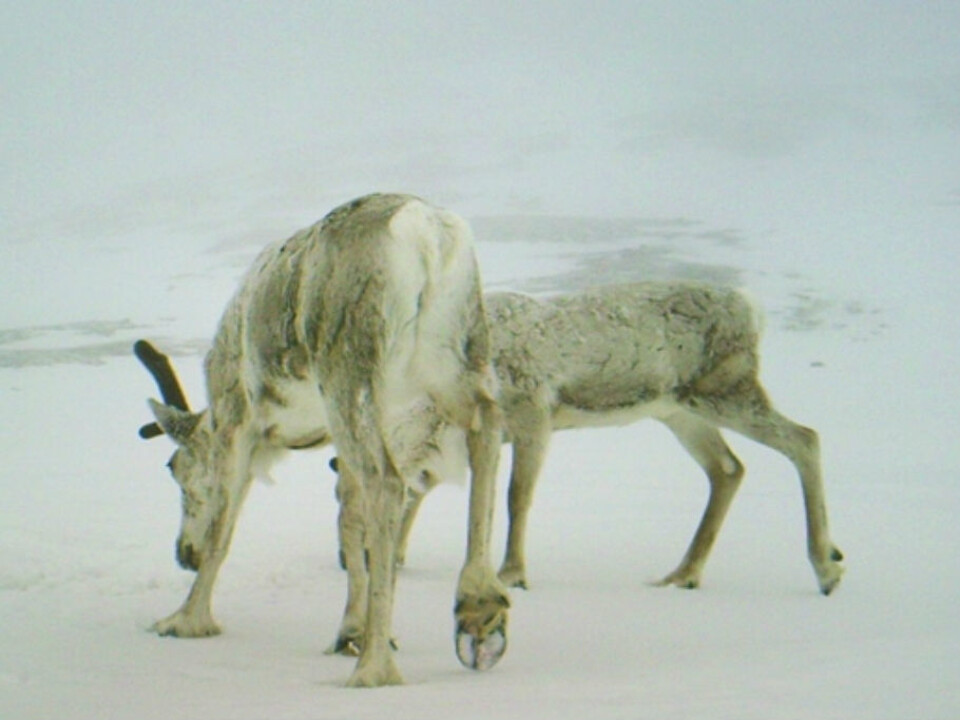
However, spring weather in the mountain is not always favorable, and some of the calves drink their first drop of milk in a blizzard. The calves are born with an extra layer of fat around their internal organs, which makes them able to handle the extreme weather conditions.
Risk their lives
While the calves takes their first steps 1,500 meters above sea levels – a pack of emaciated bucks graze quietly in the woods – 1,000 altitude meters further down. It might look peaceful, but for these bucks, the clock is ticking. Wild reindeer rutting is no child's play, and requires that the bucks have at least ten centimeters of fat on their back come fall.
The mating season starts sometime between September 20th and October 1st. In that period, the bucks fight constantly.
"Many get hurt, and if the antlers get tangled in each other one buck can break the neck of the other. The other buck usually dies as well because it cannot break free," Jordhøy explains.
Stop eating
The most vigorous bucks stop eating completely during rut, but they drink a lot of water.
It is not just the fights that pulls energy – taking care of the females is also quite demanding.
The bucks will try to make up a harem of females, something that females don't always agree on, since it limits where they can graze. The buck therefore use a substantially amount of time chasing escapees.
"The females is not interested in the buck before they ovulate, but they experience quite a few attempted rapes before they get that fare," Jordhøy says.
By the end of the mating season, the buck are quite scrawny after up to three weeks almost without food.
Chased by the females
In the middle of October, the herd calms down, and after a couple of weeks the bucks lose their antlers.
Now, the bucks suddenly face another reality.
"The females keep their antlers all through winter, and they use them to chase the bucks away from the best food patches," says Jordhøy.
During winter, the bucks lose a lot of muscle mass, and they are eager to get hold of the most protein rich plants like dwarf birch, willow sprout and herbs.
"They also need a lot of energy to grow new antlers," Jordhøy explains.
However – the buck cannot start eating plant-based food right away. In the winter, their microbiome is adapted to a diet of reindeer lichen, and cannot handle anything else.
"If they start eating just plants right away, they will get sick," says Jordhøy.
Rubbing antlers
In July, the bucks start to regain their strength, and slowly they will start walking in herds with the females again. Still harmony prevails among the bucks, but that ends in August.
"In August, the mating season is approaching, and the bucks is starting to get hostile towards each other."
All through August, the bucks are rubbing their antlers against bushes and threes. Their goal is to rub away the hairy skin that covers the antlers. When the scrubbing is done, the bucks are ready to fight.
Then, when September arrives, the bucks are once again ready to sacrifice everything – for a nine-second long mating act.
------------
Read the Norwegian version of this article at forskning.no









